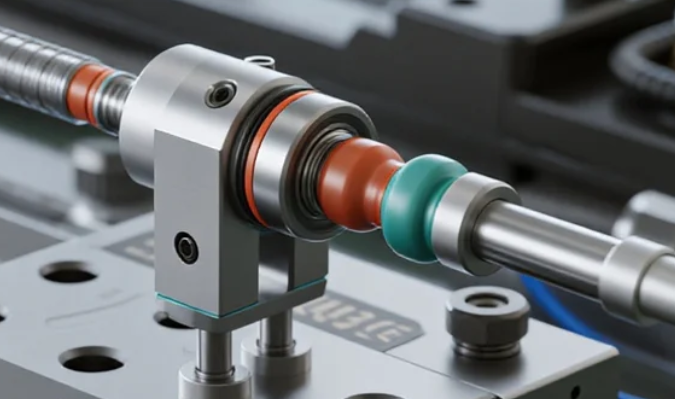מדריכים ליניאריים מסוג רולר לעומת כדור ליצירת פרופילים תלת-ממדיים בתאוצה גבוהה
הסצנה: דיוק במהירות
אתה עומד על הרצפה של המפעל ב-6:15 בבוקר, הקפה עדיין חם מדי מכדי לשתות, והשערים מעליך נדלקים לחיים עם צלצול מתכתי חד. האוויר מריח כמו ABS טרי ושמן מכוניות, בעוד השולחן שמתחת לאצבעותיך רועד כמו טלפון בכימור - זהו תיאום תלת-מימדי במהירות גבוהה במציאות.
כל שינוי כיוון מהיר הוא רעש קטן, והדבר היחיד שבין גימור חלק ללא טיפוס מחדש של 4000$ הוא הדרכון הליניארי שמחובר מתחת לעגלה.
אז, השאלה העיקרית: האם הדרכון צריך להיות גלילי או כדורי?
כדורים מול גלילים: הבסיס
בואו נפשט את המונחים לפני שהקפאין נעלם.
-
דרכונים ליניאריים כדוריים
תחשבו עליהם כמו על כביש פליזי קטן - כדורים שמתגלגלים בתוך בלוק מאפשרים לעגלה לרסק במהירות.-
יתרונות: חיכוך נמוך, עלות ידידותית, חלפים זמינים בקלות
-
חסרונות: פחות עמידים תחת עומסים קיצוניים
-
-
מנחות לינאריות גלגלתיות
המנחות משתמשות בדוכנים בצורת barril במקום כדורים, יוצרות קטע מגע ארוך יותר עם השינית-
יתרונות: בלימה מרשימה של רעידות, קשיחות גבוהה יותר
-
חסרונות: יקרות יותר, זמני משלוח ארוכים יותר, נדרשת ספיקה הדוקה יותר
-
דוגמה מחיי الواقع:
ביחידה קטנה של Markforged, החלפת מנחות כדוריות במנחות גלגלתיות הפחיתה את קווי החר ghosting במילוי דבש במהירות 200 מ"מ לשנייה ב- 50%.
אבל—העלות עלתה 38%, והמשלוח לקח שלושה שבועות נוספות .

אזהרה: כשכדורים מתקלקלים
הנה סיפור מחריד שלא מופיע בפמפלט שלנו.
באפריל שעבר, הבטחנו ללקוח רפואי 300 דגימות אנטומיות ב-24 שעות .תא ה-5 צירים שלנו פעל בGuides Kugel (בגלל שהם היו במלאי והיו זולים יותר).
בשעה התשיעית, פקדה אותנו אספה.
הכדורים נפגמו (התווספו חריצי לחץ במעגלים) בעקבות תאוצות 1.5 g רצופות . סימני הרעש שנוצרו נראו כמו פסי זברה על גב גרון
אכלנו את עלות הדפוס החוזר, עברנו לגלילים בלילה אחד, והשלמנו שש שעות באיחור .
שיעור שנלמד:
אם המהירות של המכונה שלך עוקפת תאוצה של 1 ג',' עם שינויי כיוון תכופים, הגלילים משלמים את עצמם בשעת עבודה שאינה מופנית לעבודה ופגמים .
דפי העזרת לקנייה
להנדסאי העסוק, הנה המדריך המהיר שלך:
✔ בחרו מונחי כדור אם:
-
זמן מחזור הוא קריטי.
-
תאוצה נותרת מתחת ל 0.7 g .
-
התקציב מוגבל, וצריכים חלפים קלים.
✔ בחרו מונחי גלגל אם:
-
אתם מריצים עקומים בדרגת תעופה אזרחית ב-2 g+ .
-
קשיחות ודقة הן חובה.
-
אתם יכולים להרשות לעצמכם את העלות המקדימה לצורך ביצוע אמין לטווח רחוק.
טיפ מקצועי:
-
פרילוד הוא חשוב! הניחו למממן להגדיר אותו - אלא אם תיהנו מ ripirs יקרים של ציר סיבוב
-
נהלו משא ומתן עבור אישורי תקן DIN ו ㎏arranty של 12 חודשים על עייפות שביל גלילים


